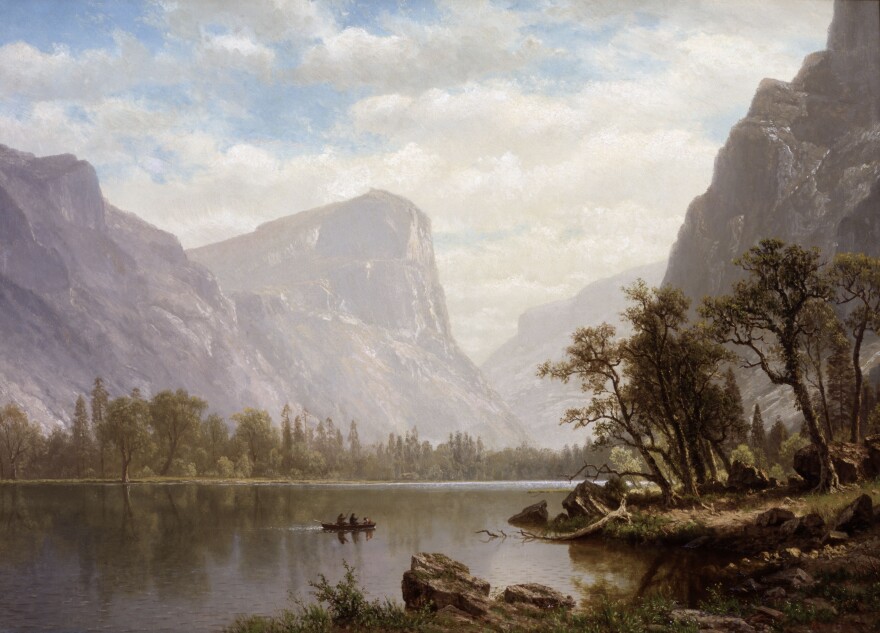The Wichita Art Museum is currently displaying the exhibition, Scenery, Story, Spirit: American Painting and Sculpture from the Santa Barbara Museum of Art. This selection of art on WAM’s second floor presents an overview of mostly 19th century landscapes, still life, genre paintings and portraiture.
This show covers a lot of historical territory. Overviews like these tend to gloss over some nuances, but I was dumbstruck that the notion of the Sublime was missing from the wall texts – or didactics – because it is an essential concept in understanding 19th century landscape painting.
The Sublime describes “untamed nature” and man’s humble place within it. Nineteenth-century landscape painters conveyed the Sublime by depicting vast, idyllic landscapes, terrifying mountains, placid lakes, picturesque wildlife and people, if present, are very small - all of which can be read as philosophical argumentation.
In the U.S., these Romantic paintings also served a political purpose. The depicted “virgin wilderness”, as the wall texts problematically describes, were visual arguments in favor of Manifest Destiny – the popular idea Americans had a divine right to expand westward. Paintings in the exhibition by Albert Bierstadt, Thomas Cole and the like are, in a sense, propaganda that helped justify some of the worst atrocities in the founding of this nation.
The didactics do nothing to problematize or fully contextualize these works, and it comes off as culturally insensitive especially considering our place in the American landscape. The art in Scenery, Story, Spirit is undeniably beautiful and historically important, but the weak didactics rob this art of its rich complexities, leaving us with all spectacle and little substance.





